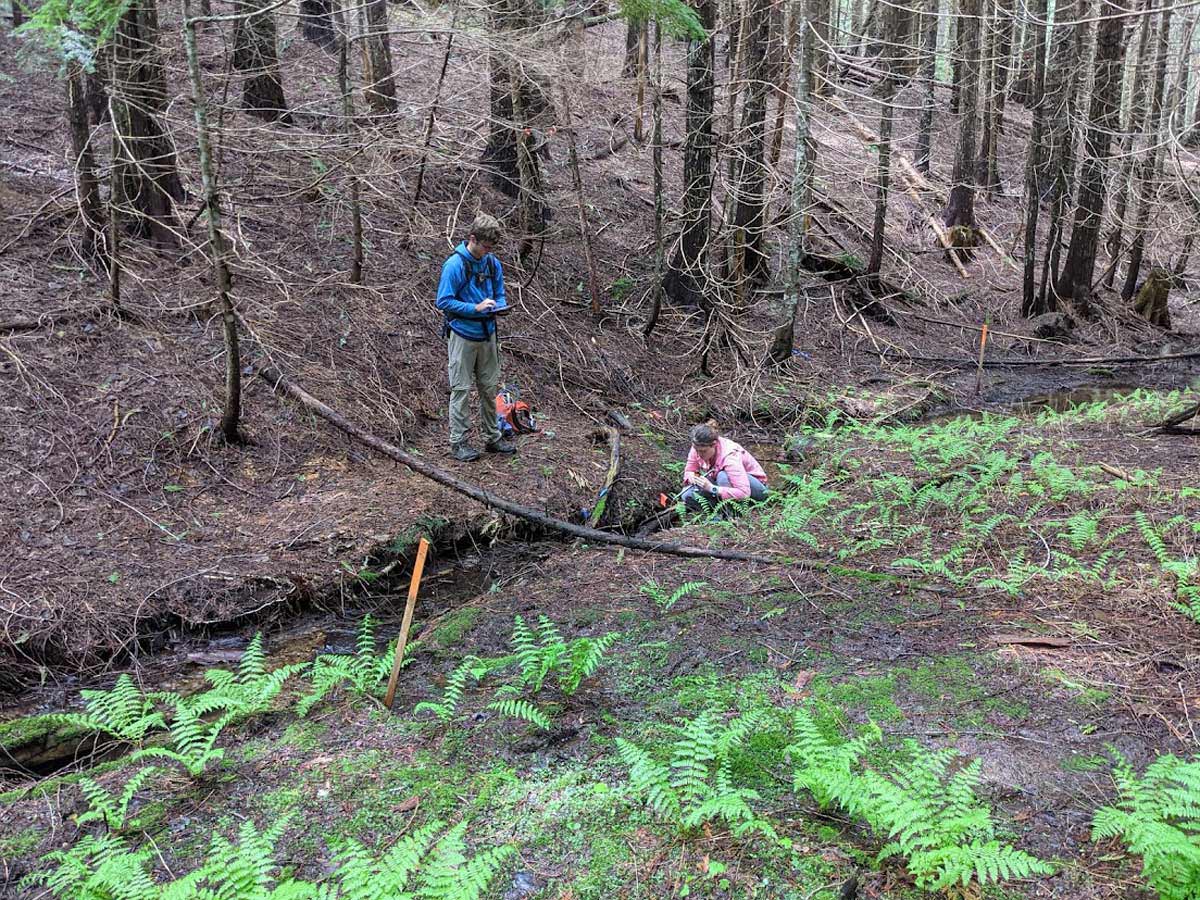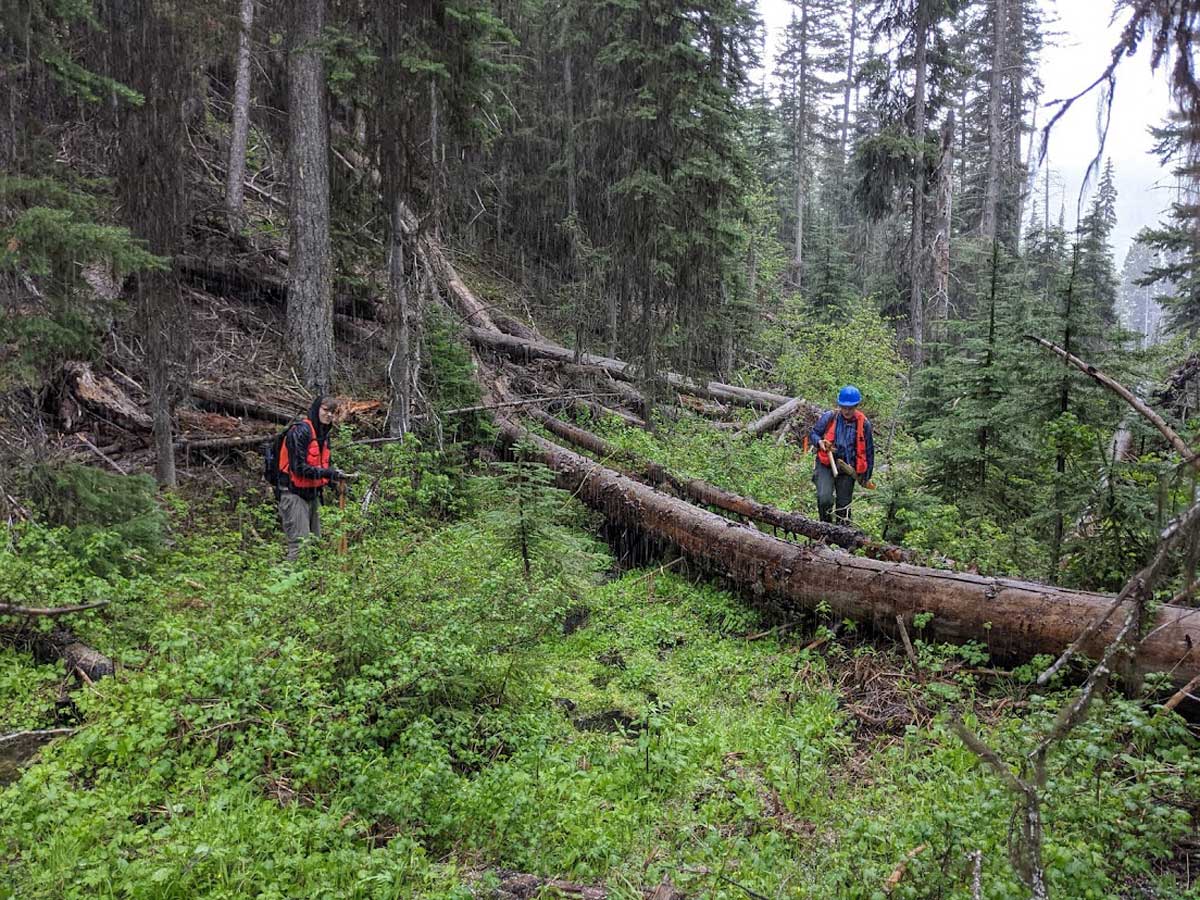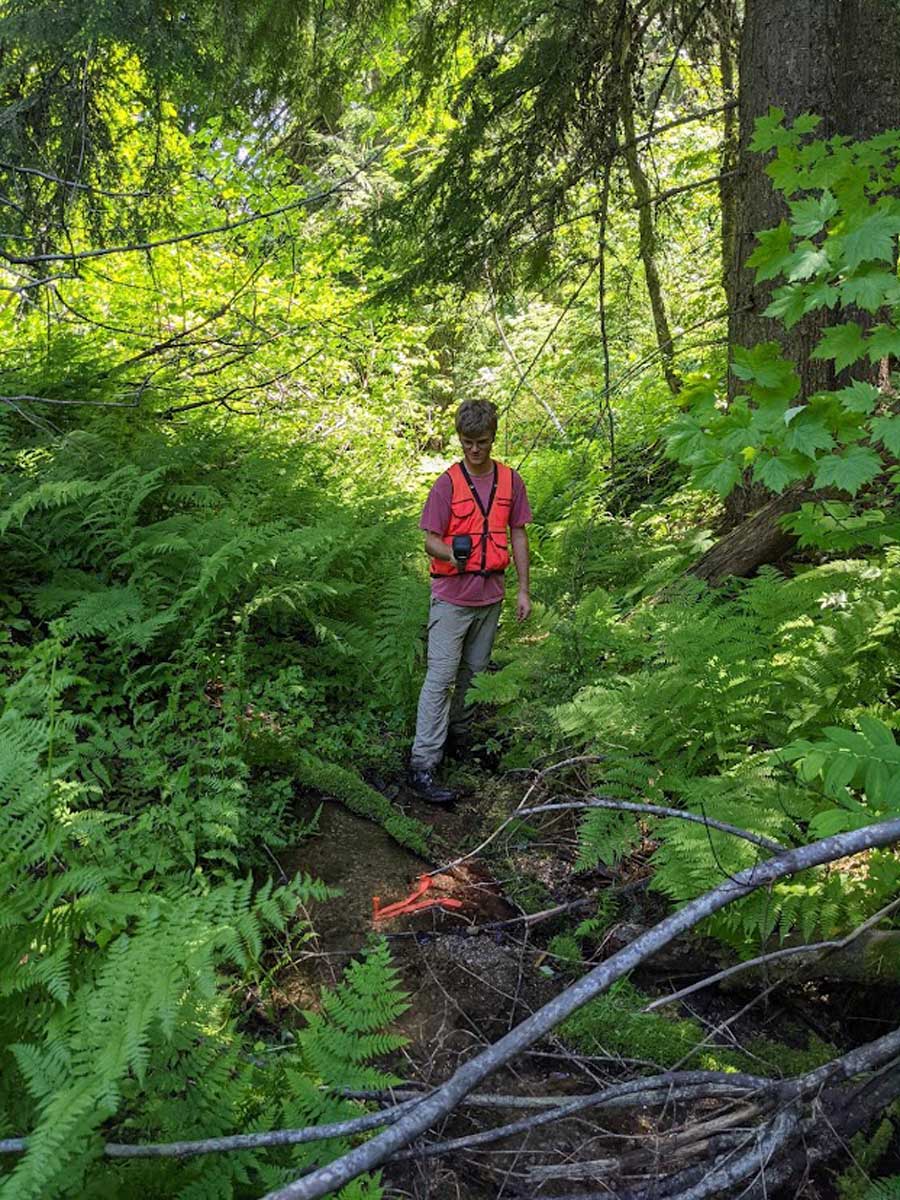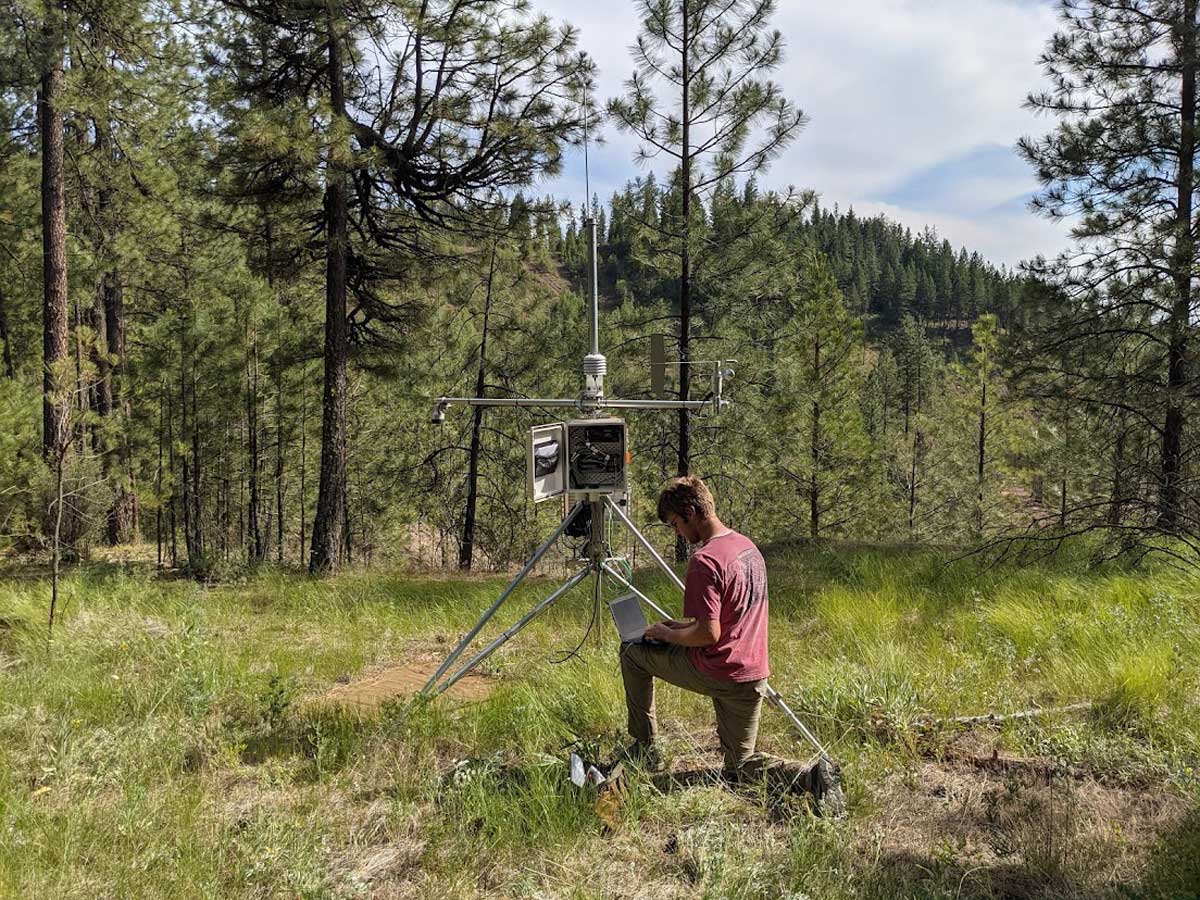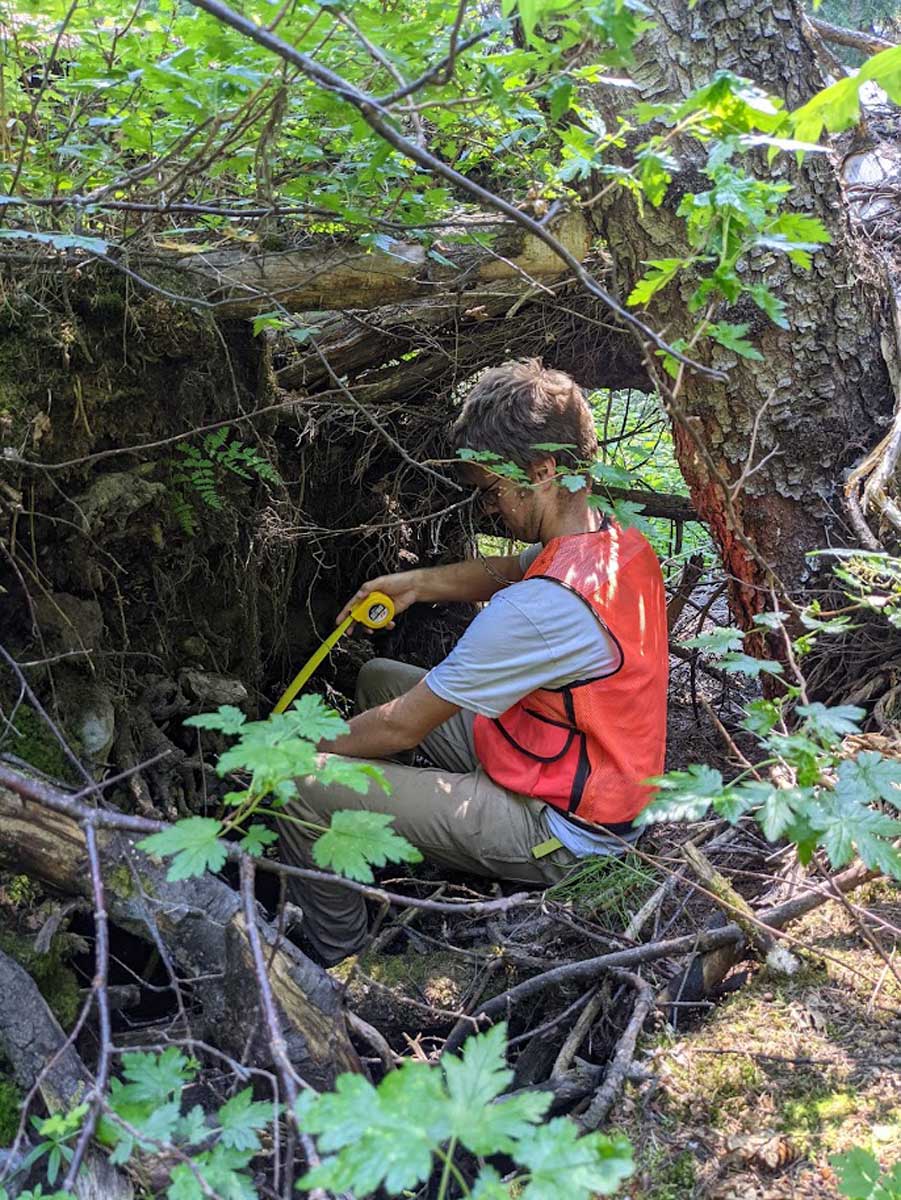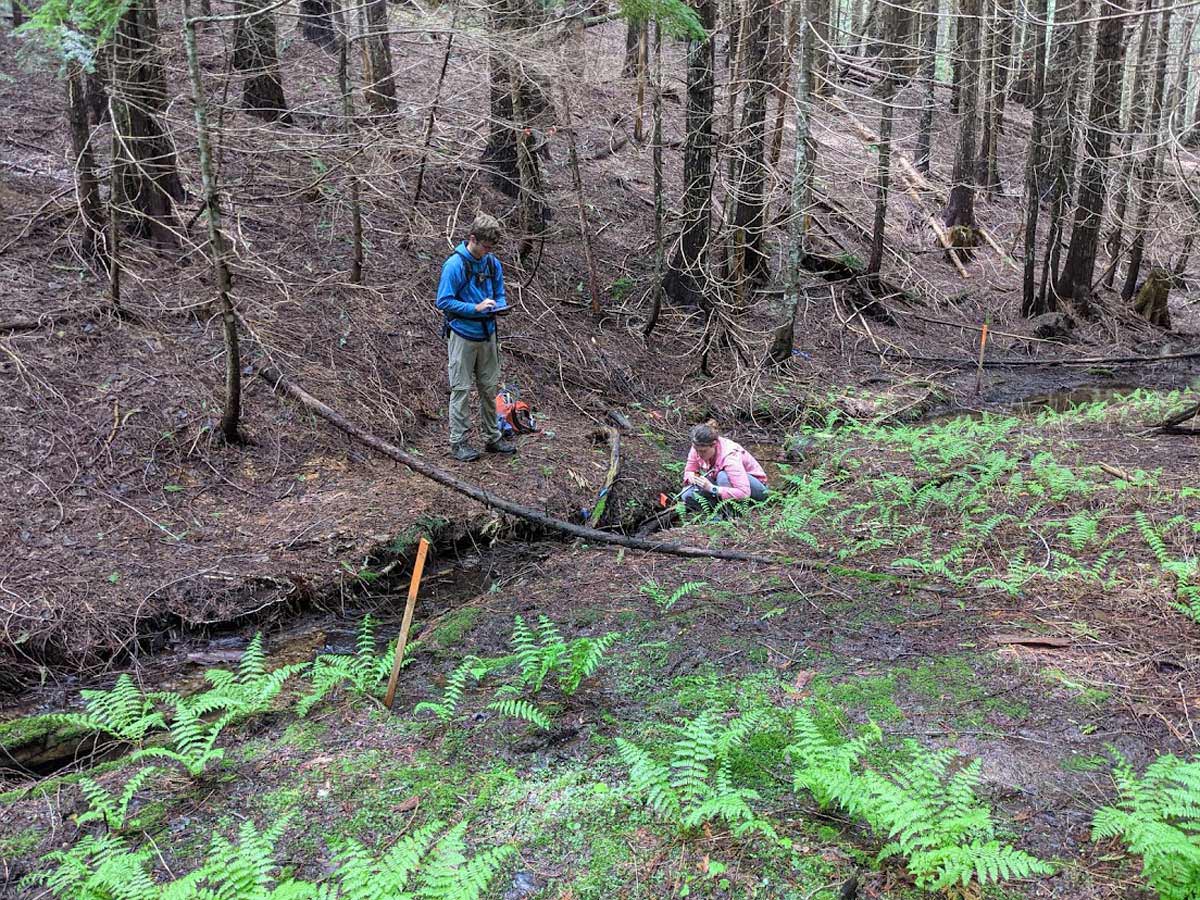Tracking Logging Impact
On Non-Fish Bearing Streams
Clayton Christensen wants a job that will allow him to sleep under the stars.
In his four years at the University of Idaho, Christensen has often slept with the Milky Way as a twinkling blanket overhead while pursuing an environmental studies degree.
Christensen worked 10 weeks tracking big horn sheep at U of I’s Taylor Wilderness Research Station surrounded by 4 million acres in the Frank Church-River of No Return Wilderness. He has also studied the effect of snow on Idaho elk and deer herds.
The University of Idaho’s College of Natural Resources has a reputation of getting its students out into the field and, in my four years here, I have not been disappointed.Clayton Christensen ’21
Most recently, the senior has been sleeping alongside streams in drainages of the Pend Oreille and Columbia rivers as he explores how well streamside buffer zones — strips of unharvested trees along streams — protect waterways from runoff and decreased shade. His work is part of a hydrology study funded in part by the Washington Department of Natural Resources (DNR).
“When a hillside is clear cut there are fewer trees to catch water so most of it runs into the streams,” Christensen said.
The five-year study conducted by the state of Washington seeks to determine how effective buffer zones are at regulating stream temperatures.
Timothy Link, professor of hydrology at U of I’s Department of Forest, Rangeland and Fire Sciences, said the research is meant to test the effectiveness of Washington’s Forest Practice rules on small, non-fish bearing streams and to advance the understanding of the role of streams at the head of major drainages.
“We’re looking at the streams before timber harvesting and comparing that to how well the buffer zones work during and after harvesting,” Link said.
During Summer 2021, Christensen has spent between two and three weeks each month camping out in northeastern Washington as he collects data with a team of researchers studying the small waterways.
The work includes measuring stream flow, silt and temperatures, using infrared cameras to capture thermal imagery of stream buffers during the day and at night.
“Managers want to ensure that aquatic resources, including water quality and organisms, are protected during forest operations,” Christensen said. “It’s cool to see how all of that is connected and how it comes together.”
In classes, you hear about a lot of these concepts and then you get to go out and apply them in hands-on research. It really prepares you to work in the field, and I think that’s unique to U of I.Clayton Christensen ’21
The study explores the influence of buffer zones on streams and riparian soils on a variety of aspects and vegetation — such as south-facing Ponderosa pine forests or steep north-facing slopes with primarily Douglas fir and cedar — and varying amounts amount of direct sun.
Project manager Teresa Miskovic of the Washington DNR said the work done by U of I is imperative to help fill the gaps in scientific understanding of headwater streams. It is also meant to show how riparian stands, amphibians, water quality and downstream fish populations respond to different riparian management strategies.
In addition to providing answers to the DNR, Miskovic said the five-year project will provide students opportunities for field work.
“This collaboration not only provides us assistance with this priority data collection, but it provides students with the valuable field experience that enriches their education and provides the background they can take to future careers,” she said.
Christensen said the hands-on learning he gained in this and other undergraduate studies at U of I has been rewarding and will be applicable in the job market after he earns a degree this year.
“The University of Idaho’s College of Natural Resources has a reputation of getting its students out into the field and, in my four years here, I have not been disappointed,” said Christensen, who grew up in Meridian.
“In classes, you hear about a lot of these concepts and then you get to go out and apply them in hands-on research. It really prepares you to work in the field, and I think that’s unique to U of I.”
Article by Ralph Bartholdt, University Communications and Marketing.
Photography by Ian Hellman.
Published August 2021.
